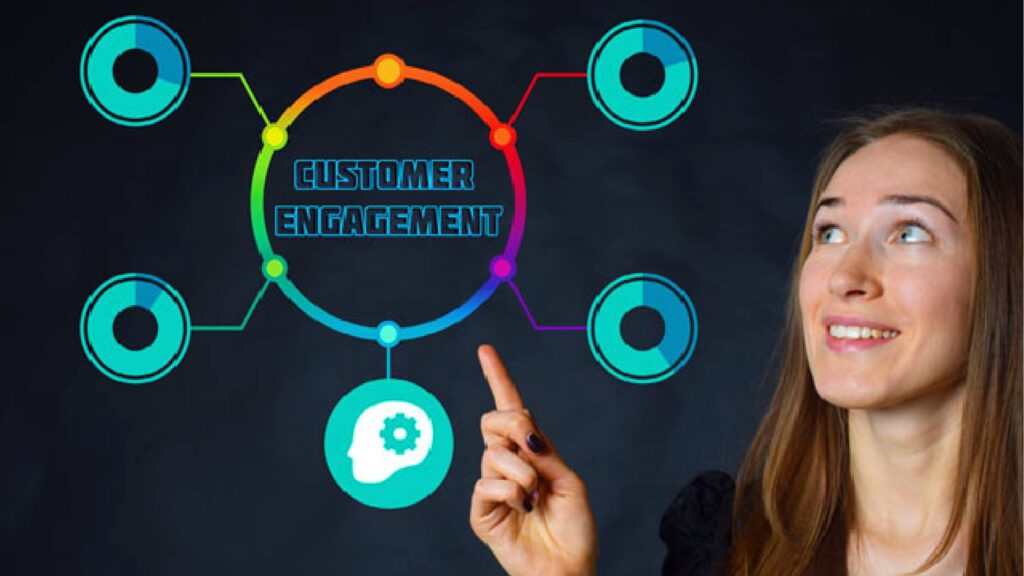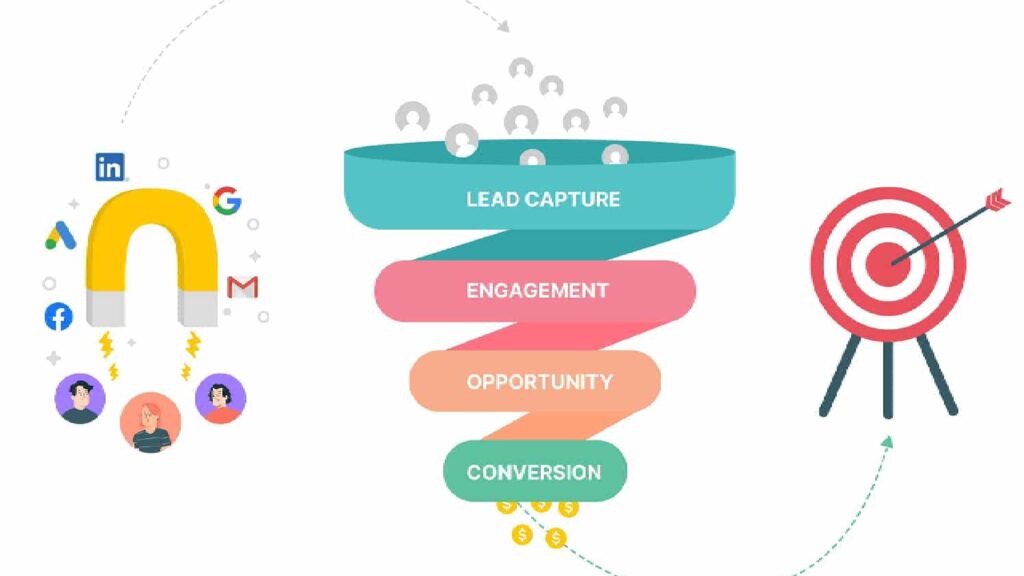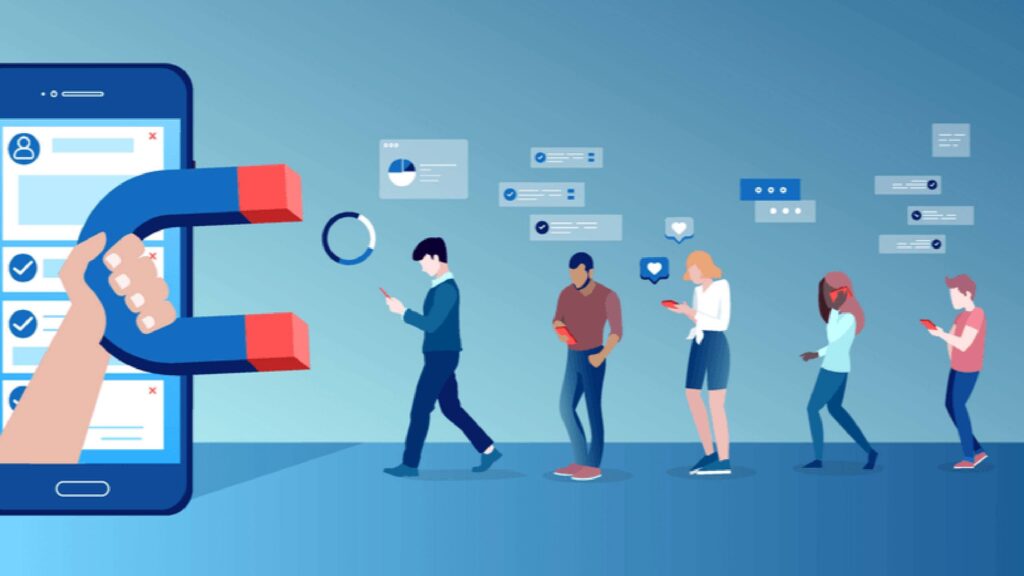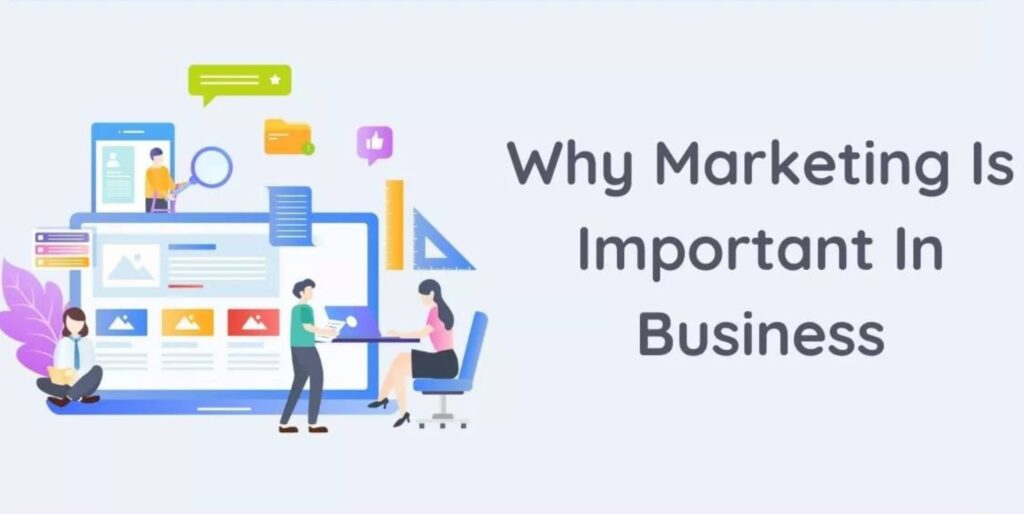Introduction
Marketing is essential to the success of any business, as it serves as the bridge between a company and its potential customers. It is through marketing that businesses can effectively communicate their value, establish a recognizable brand, and differentiate themselves in a crowded marketplace. By utilizing various strategies such as advertising, content creation, social media, and market research marketing helps businesses reach their target audience, generate awareness, and foster engagement. Without marketing, even the most innovative products or services may struggle to gain visibility and attract customers.
Beyond simply attracting attention, marketing plays a vital role in building and maintaining customer relationships. Through consistent and personalized communication, businesses can nurture loyalty and create lasting connections with their audience. This ongoing engagement leads to repeat business and word-of-mouth promotion, both of which are crucial for long-term growth. In today’s fast-paced, competitive environment, marketing is not just a tool for promotion; it is a critical element for driving sales, fostering customer loyalty, and ensuring business sustainability.
1. Creating and Sustaining marketing Awareness
Creating and sustaining awareness goes far beyond just letting the world know that a business exists. It’s about making the brand recognizable and relevant across all potential touchpoints in a customer’s journey. Here’s a more detailed breakdown of how businesses achieve and sustain awareness:
A. Brand Visibility Across Multiple Channels
Today’s marketing landscape is omnichannel, meaning businesses need to be visible wherever their potential customers are. This involves various strategies, including:
Digital Marketing: Leveraging platforms like Google, Facebook, and Instagram for paid ads helps boost visibility. Through digital channels, businesses can create ads with highly targeted segments, including location, interests, and online behavior. Unlike traditional media, digital marketing provides precise tracking of performance and ROI.

Organic Visibility via SEO: Search Engine Optimization (SEO) isn’t just about keywords but also about providing valuable content and ensuring a good user experience. By optimizing website speed, mobile-friendliness, and creating in-depth content that answers customers’ queries, a business can rise in search engine rankings and get more visibility without relying solely on ads.
Social Media Engagement: Platforms like Instagram, Facebook, LinkedIn, and TikTok allow brands to engage directly with their target audience. Regular posts, stories, and user-generated content encourage two-way communication. Successful campaigns on these platforms can lead to viral exposure, significantly increasing awareness.
B. Targeted Messaging and Storytelling
It’s not just about reaching people but reaching the right people with the right message. Marketing helps:
Audience Segmentation: Marketing tools enable businesses to segment their target market based on demographic factors age, income, location, psychographics interests, lifestyles, and behavioral factors previous purchases, browsing habits. By doing so, businesses can create personalized messages that resonate with different segments of their audience.
Personalized Customer Journeys: Through marketing automation and CRM systems, businesses can create personalized experiences for potential customers at every stage of their journey. For instance, emails that target abandoned carts, personalized product recommendations, and retargeted ads all help maintain brand awareness and keep a brand top-of-mind.
Storytelling for Emotional Connection: Storytelling helps humanize a brand, making it relatable to customers. By sharing the brand’s history, vision, and purpose, businesses foster an emotional connection with customers. Storytelling also helps reinforce the brand’s core values, making the brand identity stronger and more memorable over time.
C. Content Marketing for Ongoing Engagement
Content is a powerful tool for keeping awareness alive:
Blogging: Regular blogging not only helps with SEO but also positions the brand as an authority in its field. Blogs should answer customer questions, provide insights, and offer solutions, ultimately building trust and keeping customers engaged. Additionally, high-quality content can be shared across social media platforms, further boosting visibility.
Video Marketing: With video content, businesses can explain complex products, showcase case studies, and even provide behind-the-scenes insights into their brand. Platforms like YouTube or TikTok allow brands to use video to tap into both educational and entertainment value.
Long-form Content: White papers, case studies, and eBooks offer in-depth insights and show industry expertise. These are particularly effective in B2B marketing, where businesses need to demonstrate thought leadership and in-depth knowledge of their industry.
By constantly engaging customers through valuable and consistent content, businesses can keep awareness alive while also positioning themselves as a go-to solution provider in their niche.
2. With marketing Building Trust and Credibility
Building trust takes time, and marketing plays a pivotal role in establishing and maintaining credibility in the marketplace. Here’s a more detailed look at how businesses can develop trust through marketing strategies:
A. Thought Leadership and Authority
When businesses are seen as experts in their field, they automatically gain customer trust. Marketing helps in building this authority through:
Content as an Educational Tool: High-value, educational content can make a business a go-to resource. For instance, a financial consultancy might publish regular market analyses or economic forecasts to establish authority.
Publishing Case Studies and Success Stories: Showcasing successful projects and outcomes through detailed case studies is a powerful way to build credibility, especially in B2B marketing. Prospects can see real-world applications and tangible results, instilling confidence.
Industry Recognition: Awards, certifications, and media mentions all help position a brand as a leader in its space. Marketing efforts often center around publicizing these achievements to reinforce credibility. Hosting or speaking at industry events also contributes to this goal.

B. Transparency and Ethical Practices
In the age of digital communication, customers demand transparency from businesses. Honest marketing and clear communication lead to long-term trust:
Transparent Pricing Models: A clear and upfront pricing structure with no hidden fees builds consumer trust. Offering full visibility into what customers are paying for and why ensures there’s no confusion or dissatisfaction later.
Communicating Failures and Fixes: Brands that openly address product recalls, mistakes, or customer complaints often gain more trust than those that avoid difficult conversations. Marketing teams should craft communication strategies that turn potential crises into opportunities to show commitment to customer satisfaction.
Ethical Marketing Campaigns: Whether it’s promoting sustainability, responsible sourcing, or social causes, marketing allows businesses to communicate their ethical stance. Brands like Patagonia and TOMS Shoes have built their entire brand image around social responsibility, reinforcing trust and loyalty.
C. Social Proof and User-Generated Content
Nothing builds credibility like the endorsement of satisfied customers:
Reviews and Testimonials: Positive reviews on platforms like Google, Yelp, or Trustpilot serve as powerful social proof. Marketing departments actively seek and highlight these reviews to show new customers the positive experiences of others.
Influencer Marketing: Endorsements from trusted influencers within a niche can provide instant credibility. When done authentically, influencer marketing can bridge the gap between brand promotion and word-of-mouth, reaching audiences in a trusted environment.
User-Generated Content UGC: Encouraging customers to share their own experiences, photos, videos, and stories on social media is a great way to build trust. When customers see real people using and enjoying a product, it adds a layer of authenticity that traditional ads often lack.
3. Deepening Customer Understanding and Personalization marketing
The ability to deeply understand and cater to customers’ needs is essential for long-term success. Marketing plays a key role in gathering and analyzing data to understand customer behavior, preferences, and pain points.
A. Market Research and Consumer Insights
Businesses can use various marketing tools to conduct market research and gain a clearer understanding of their target audience:
Surveys and Focus Groups: Surveys, polls, and focus groups give direct insights into customer opinions. Businesses can understand what’s working, what’s not, and what changes they need to make to improve their offerings.
Analyzing Customer Data: Advanced marketing tools track user behavior online, such as time spent on pages, bounce rates, and click-through rates. By analyzing these data points, businesses can determine what’s engaging their customers and where they’re losing them.
Competitor Analysis: Marketing research also helps businesses analyze their competitors. This includes studying competitors’ messaging, market positioning, pricing strategies, and customer reviews. By understanding what their competitors are doing well or poorly, businesses can refine their strategies to gain a competitive edge.

B. Personalization and Tailored Experiences
Personalized marketing is a key trend because customers expect tailored experiences:
Personalized Emails and Messaging: Email marketing campaigns segmented by customer behavior (such as purchase history or browsing behavior) allow businesses to send personalized offers or content. For example, Netflix sends personalized movie recommendations based on user history, enhancing customer satisfaction and retention.
Dynamic Content: Many websites now use dynamic content that changes based on the user’s preferences, location, or past behavior. This could include personalized product recommendations, custom discounts, or targeted content that speaks to the individual’s specific needs.
Behavioral Targeting: Through behavioral data analysis, businesses can serve targeted ads and promotions based on the actions that a customer takes on their website or social media. This hyper-targeted approach ensures relevance, increasing the chances of conversion.
C. Customer Feedback Loops
Marketing isn’t a one-way conversation. Gathering feedback through marketing channels helps businesses improve their offerings:
Customer Reviews and Suggestions: Platforms like Google and Yelp allow customers to leave reviews, but businesses can also collect feedback via surveys, social media polls, and customer service interactions. Marketing teams analyze this feedback to understand what improvements can be made.
Engaging Directly Through Social Media: Social media platforms offer direct interaction with customers, allowing brands to respond to questions, address complaints, or simply thank customers for their support. Prompt and thoughtful responses on social media demonstrate attentiveness, improving the overall brand image.
4. Generating Leads and Sales Through Marketing
Marketing’s direct contribution to the sales pipeline is perhaps the most tangible aspect of its value. Without lead generation and conversion strategies, a business can struggle to grow. Here’s a deeper dive into how marketing fuels sales:
A. Inbound Marketing for Organic Lead Generation
Inbound marketing is all about attracting customers by providing valuable content tailored to their needs:
SEO and Organic Traffic: Through targeted SEO efforts, businesses attract organic traffic from search engines. The content created blogs, guides, etc. is designed to answer potential customers’ questions, making it more likely that they’ll visit the business’s website and convert into leads.
Content Funnels: Content marketing helps guide potential customers down a sales funnel. A potential customer might first discover a brand through a blog post, then sign up for a newsletter, eventually receiving an offer or product suggestion that leads to a purchase.
Social Proof in Lead Generation: Showing the success stories of previous customers or featuring positive testimonials on a website can turn curious visitors into qualified leads ready to purchase.

B. Outbound Marketing for Immediate Results
While inbound marketing is about drawing people in, outbound marketing focuses on reaching out:
Paid Advertising: Google Ads, Facebook Ads, and retargeting campaigns allow businesses to reach customers who may not yet know about the brand. With advanced targeting, ads are shown to the right audience, maximizing the chance of conversion.
Lead Nurturing through Email Campaigns: Once a lead is generated, email marketing helps nurture them toward conversion. Drip email campaigns guide leads through the buyer’s journey by providing valuable content, addressing objections, and offering limited-time deals to prompt action.
Sales and Promotional Events: Marketing often runs promotions, discounts, and special offers to incentivize purchases. Well-timed promotional campaigns, aligned with holiday seasons or product launches, can boost short-term sales.
5. Customer Retention and Loyalty
While acquiring new customers is essential, retaining existing ones is just as important. Retention efforts are often more cost-effective than acquisition and lead to greater lifetime value for customers.
A. Engagement through Loyalty Programs
Loyalty programs incentivize repeat purchases by rewarding customers for their engagement:
Point Based Systems: Customers earn points for each purchase, which can be redeemed for discounts, free products, or other rewards. This keeps them coming back and motivates them to choose your brand over competitors.
Exclusive Offers and VIP Programs: Offering special perks to loyal customers like early access to sales, special discounts, or free gifts helps them feel valued and appreciated. This strengthens the emotional connection with the brand and encourages continued loyalty.

B. Retention Marketing through Personalization
Personalized retention strategies build customer loyalty:
Re Engagement Campaigns: If customers haven’t purchased in a while, targeted email campaigns with personalized offers or reminders of previous interactions can bring them back into the fold.
Milestone Celebrations: Many businesses now celebrate milestones with their customers, such as birthdays, anniversaries of sign-up, or purchase milestones. Personalized emails with a small reward like a discount create positive emotional engagement.
C. Customer Feedback and Continuous Improvement
Marketing teams can use customer feedback to foster loyalty:
Customer Surveys and Follow-ups: After a purchase, follow up emails asking for feedback show customers that their opinions matter. Taking action on negative feedback and communicating improvements also helps to regain trust.
Building Brand Communities: Some businesses build communities around their brand, where customers can share their experiences, offer advice to one another, or participate in discussions. These brand communities foster deeper loyalty and keep customers engaged.
6. Competitive Advantage and Differentiation
In a crowded marketplace, standing out is critical. Marketing helps businesses create a competitive advantage by differentiating them from their competitors.
A. Developing a Unique Selling Proposition USP
The USP is what makes your business different from competitors:
Clear Communication of Value: Marketing clarifies the unique aspects of your products or services whether it’s better quality, superior customer service, or innovative features. Effective marketing highlights why customers should choose your brand over others.

B. Competitive Analysis and Strategy
Marketing teams constantly monitor competitors to stay ahead:
Identifying Weaknesses and Gaps: Marketing research can uncover gaps in competitors offerings or weaknesses in their approach. For example, if a competitor’s customer service is slow, a business can market its own fast, 24/7 customer support as a selling point.
Staying Innovative: Marketing helps businesses stay ahead of trends and customer preferences. For instance, brands that were early adopters of social media platforms like TikTok or technologies like augmented reality in their marketing campaigns saw huge growth simply by innovating earlier than competitors.
7. Driving Long-Term Sustainability through Brand Equity
Building brand equity essentially the value that a brand adds to a product is a long-term investment that pays dividends in terms of customer loyalty, pricing power, and business longevity.
A. Building Emotional Connections with Customers
Strong brands evoke emotions in their customers, leading to loyalty:
Emotional Branding: Businesses like Nike, Apple, and Coca-Cola have built powerful emotional connections with customers through consistent, emotionally-driven marketing campaigns. These brands create a lifestyle or identity that customers align themselves with, rather than just selling a product.
Consistency Over Time: By consistently delivering on promises and providing high-quality customer experiences, businesses can cultivate a strong brand image. Marketing ensures that the brand’s values, mission, and voice remain consistent, regardless of changing trends.

B. Price Premium and Perceived Value
Strong brands with high equity can charge a premium for their products:
Perceived Value: Through strong marketing efforts, businesses can create a perceived value that goes beyond the tangible aspects of the product. For example, Apple can charge more for its products not just because of the features, but because of the brand’s premium image, created by years of strategic marketing.
Loyalty and Repeat Business: Customers often stay loyal to brands with strong equity, even when new competitors enter the market. This loyalty comes from years of consistent marketing efforts that reinforce the brand’s identity, values, and customer experience
Conclusion: Marketing as a Core Business Investment
Marketing is not just about short-term gains or driving sales in the immediate future. It is a long-term investment that builds awareness, trust, credibility, and competitive advantage. By understanding and engaging with customers at every stage of their journey, marketing helps businesses generate revenue, foster loyalty, and ensure sustainability. Businesses that prioritize and invest in strategic marketing are better positioned to not only grow but to thrive in an increasingly competitive and fast-changing marketplace.


